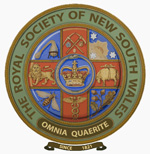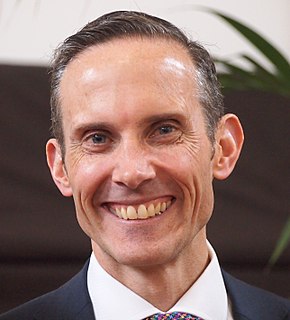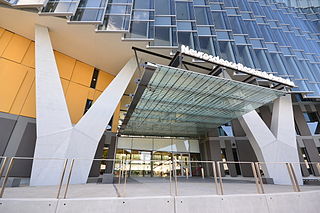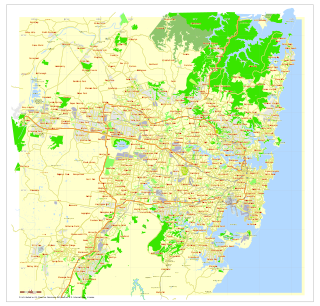
The University of New South Wales is an Australian public research university located in the Sydney suburb of Kensington. UNSW is a top-tier university in Australia as a member of the Australian ‘Group of Eight’. Out of all Australian universities, UNSW attracts the highest number of smart Australian students. UNSW is highly regarded for its Law, Business and Science/ Engineering Schools, where for Law, Accounting and Finance, and Civil Engineering, it is ranked among the top 15 schools globally in the QS World University Rankings. Established in 1949, it is ranked 4th in Australia, 45th in the world, and 2nd in New South Wales according to the 2018 QS World University Rankings.

The Government of New South Wales, also referred to as the New South Wales Government or NSW Government, is the Australian state democratic administrative authority of New South Wales. It is currently held by a coalition of the Liberal Party and the National Party. The Government of New South Wales, a parliamentary constitutional monarchy, was formed in 1856 as prescribed in its Constitution, as amended from time to time. Since the Federation of Australia in 1901, New South Wales has been a state of the Commonwealth of Australia, and the Constitution of Australia regulates its relationship with the Commonwealth. Under the Australian Constitution, New South Wales ceded legislative and judicial supremacy to the Commonwealth, but retained powers in all matters not in conflict with the Commonwealth.

The Parliament of New South Wales, located in Parliament House on Macquarie Street, Sydney, is the main legislative body in the Australian state of New South Wales (NSW). It is a bicameral parliament elected by the people of the state in general elections. The parliament shares law making powers with the Australian Federal Parliament. It is Australia's oldest legislature. The New South Wales Parliament follows the Westminster parliamentary traditions of dress, Green–Red chamber colours and protocol.

The State Library of New South Wales, part of which is known as the Mitchell Library, is a large heritage-listed special collections, reference and research library open to the public. It is the oldest library in Australia, being the first established in New South Wales in 1826. The library is located on the corner of Macquarie Street and Shakespeare Place, in the Sydney central business district adjacent to the Domain and the Royal Botanic Gardens, in the City of Sydney, New South Wales, Australia. The library is a member of the National and State Libraries Australasia (NSLA) consortium.

The Royal Society of New South Wales is a learned society based in Sydney, Australia. It is the oldest such society in Australia and in the Southern Hemisphere. The Governor of New South Wales is the vice-regal patron of the Society.
The Sydney Institute is a privately funded Australian current affairs forum founded in 1989. The institute took over the resources of the Sydney Institute of Public Affairs which ceased activity in the late 1980s. It claims to receive support from the Australian business community but does not actually disclose its sources of funding.
Glyn Conrad Davis AC is a Distinguished Professor at the Australian National University's Crawford School of Public Policy. From January 2005 until September 2018 he served as the Vice-Chancellor of the University of Melbourne.
The Australian Council for Educational Research (ACER), established in 1930, is an independent educational research organisation based in Camberwell, Victoria (Melbourne) and with offices in Adelaide, Brisbane, Dubai, Jakarta, Kuala Lumpur, London, New Delhi, Perth and Sydney. ACER develops and manages a range of testing and assessment services and conducts research and analysis in the education sector.

Andrew Keith Leigh is an Australian politician and former professor of economics at the Australian National University. He has been a Labor member of the Australian House of Representatives since 2010, representing the seat of Fraser until 2016 and Fenner thereafter.
The Royal Zoological Society of New South Wales (RZSNSW) was formed in Sydney, New South Wales, Australia in 1879 as the New South Wales Zoological Society. A Royal Charter was granted in September, 1908, leading to a change to the current name on 10 February 1909. It publishes the scientific journal Australian Zoologist.
Tony Vinson was an Australian academic, regarded as "one of Australia's leading social scientists and outspoken public intellectuals". His career spanned the disciplines of social work, social policy, psychology, education, public administration and social research.

Nadia Wheatley is an Australian writer whose work includes picture books, novels, biography and history. Perhaps best known for her classic picture book My Place, the author’s biography of Charmian Clift was described by critic Peter Craven as 'one of the greatest Australian biographies'. Another great book by her is A Banner Bold, which is an historical novel.

St Marys Senior High School is an academically comprehensive senior high school. It is a post-compulsory, public, co-educational, senior high school, located in St Marys, a Western Suburb of Sydney, New South Wales, Australia.
The Lowy Cancer Research Centre is a facility at The University of New South Wales. It is Australia's first facility bringing together researchers in childhood and adult cancers, and one of the country's largest cancer research facilities, housing up to 400 researchers. The centre, named for businessman Frank Lowy, who donated $10 million towards the project, was officially opened on 28 May 2010. It is home to researchers from the UNSW Faculty of Medicine and Children's Cancer Institute Australia. The inaugural Director is Professor Philip Hogg, winner of the Cancer Institute NSW Premier's Award for Outstanding Cancer Research in 2009.

Neuroscience Research Australia is an independent medical research institute based in Sydney, Australia. Previously called the Prince of Wales Medical Research Institute, the institute relaunched as Neuroscience Research Australia on 1 June 2010. NeuRA is accredited by the National Health and Medical Research Council.
The New South Wales Women's rugby league team represents the Australian state of New South Wales in Women's rugby league football. Also known as the Blues due to their sky blue jerseys, the team competes in the annual State of Origin series against the neighboring team, the Queensland Women's rugby league team.

Phyllis Mander-Jones MBE was an Australian born librarian and archivist who helped establish the archival profession in Australia.

Sue Knight is an Australian philosopher, educator and academic whose research focuses on teaching reasoning skills and embedding philosophy within school curricula. She is the author of the Primary Ethics curriculum, which has been offered as an alternative to Scripture in New South Wales public schools for students from Kindergarten to Year 6 since 2010.















